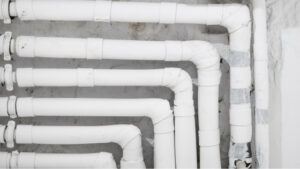5 Bathroom Plumbing Basics Homeowners Should Know By Heart
Plumbing issues in the bathroom can be one of the most stressful problems you can have in your home.
Knowing the basic bathroom plumbing hacks can ensure you can still use your toilet until a professional plumber can get to the bottom of your issue and provide a long-lasting solution.
Here are five bathroom plumbing basics you should know about to deal with some common plumbing issues:
Low water pressure
Taking a bath with low water pressure can really be a drag. But before you call a plumber, check if the pressure remains low when you switch from cold water to hot water. If it does, this means that there is some kind of mineral deposit in your shower head aerator.
If your aerator is removable, take it out and soak it in vinegar overnight. In case the aerator is not detachable or your shower doesn’t have one, soak the shower head in a bag of vinegar overnight.
In case this quick-fix does not work, an Appleton plumber says that the shower head cartridge may be blocking the water flow, thus causing the low water pressure. For this instance, you need to call a plumber since the cartridge needs to be removed and fixed or replaced.
The plumber will also need to the check the water pressure at the water meter and inspect your pipes to determine other possible causes.
Leaking faucet
One of the most common causes of a dripping faucet is a worn-out washer. This is the rubber part that forms a seal to prevent water from coming out. All rubber washers wear out over time due to exposure to water.
To know if this is the cause of dripping faucet in your bathroom, you will have to unscrew the faucet to remove the cartridge and check the washer. If you don’t have the tools to unscrew the faucet and to remove the cartridge, you will have to call a plumber.
Slow or clogged drains
Slow or clogged sinks and shower drains are often caused by a buildup of accumulated hair, soap and shampoo scum, and other debris in the drains.
To fix this issue, remove the pop-off drain cover in the sink or shower floor. Put on some rubber gloves and remove any debris. You can also use an auger or an old, partially straightened wire hanger to pull up hair strands and other debris.
If this does not fix the problem, use a plunger to loosen the debris. Next, flush the drains with a mixture of vinegar and baking soda to further unclog and clean the drains.
Clogged Toilet
A clogged toilet can make your bathroom and even your home unsanitary.
If you’re not afraid to get dirty to try and fix this problem, use a plunger to remove the clog. In case the plunger does not work, use an auger to dislodge clogs that the plunger can’t reach.
If you don’t want to unclog your toilet on your own or it still doesn’t work, call a professional.
Running Toilet
Lastly, a running toilet problem can often be fixed by replacing a warped or broken flapper, installing a new chain, or readjusting the float.
If you have this issue, you should start by checking the flapper valve first since this part often breaks easily. You can then replace the flapper easily. There are also different toilet repair kits you can buy to stop water from running continuously in your toilet.
In case any these quick fixes do not work, hire a plumber to check your toilet since there will be a deep-seated cause behind this problem.
When you have a bathroom plumbing issue, it is important that you know the difference between minor and major plumbing issues. This will help you save a lot of time and effort in attempting a DIY job. It will prevent you from spending more money than needed as well.








